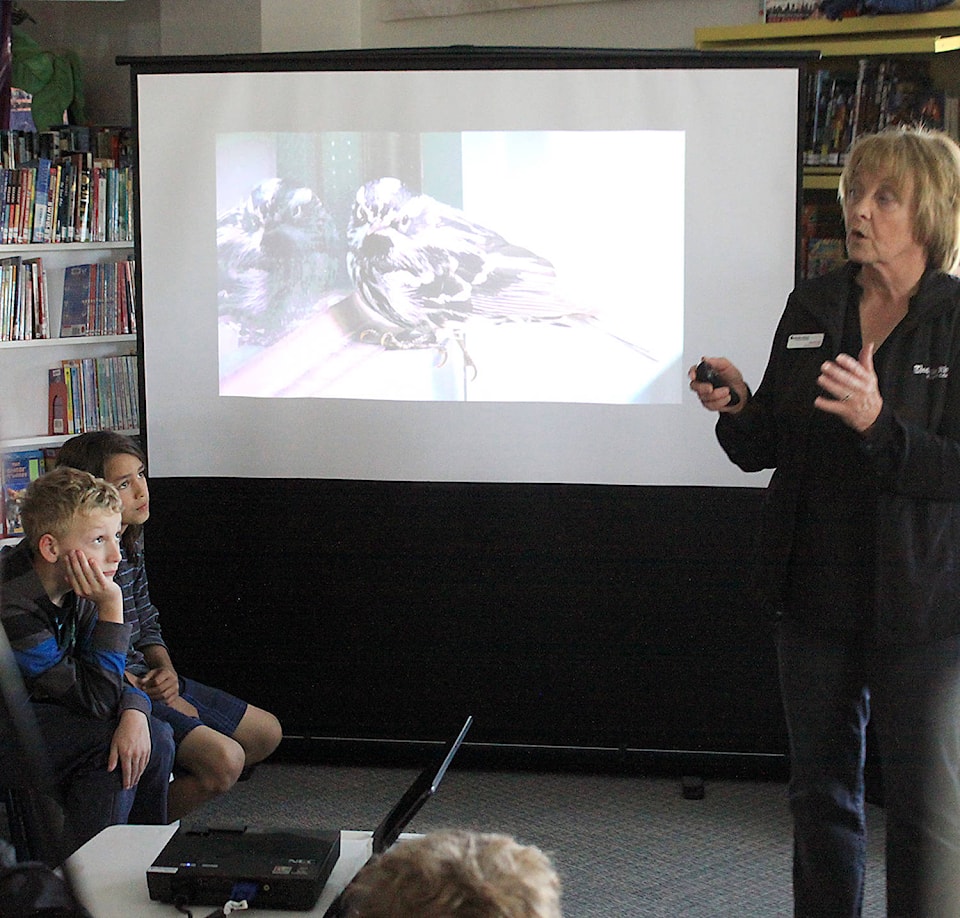With around 150 presentations annually, the message on how humans should act around wildlife may eventually reach all of central Alberta.
The Medicine River Wildlife Centre (MRWC) — located just east of Innisfail — paid a visit to Bashaw on June 21 as part of its continuing effort to educate the public on animal behaviour, what the centre does and how people should most of the time mind their own business.
Carol Kelly, the centre’s founder and executive director, along with its education coordinator Erin Young made presentations to several classes at Bashaw School and concluded the day with a stop at a packed Bashaw Public Library.
“Education for everyone is key,” stated Kelly. “By showing how humans impact the environment and implementing changes, people learn how they can help reduce injuries to wildlife.”
The presentations, which are all geared toward specific audiences, all have a similar focus and include debunked many of the ‘urban myths’ that remain in society today.
One of those myths that Kelly stated is regularly brought up is regarding baby birds.
“We talk about a lot of the urban myths surrounding animals, which are all not true. For instance, people still say that you shouldn’t pick up a baby bird or it will be rejected by its mother,” she said.
“Well, birds can’t smell, so some kids think their parents have been lying to them. I tell them it’s just their parents have not kept up with the times.”
Not staying ahead of things or just being old fashioned in thinking isn’t limited to parents, as Kelly is still trying to get some provincial government officials to join the 21st century when it comes to animal rescue and rehabilitation.
“When I began advocating to be allowed to help injured wildlife 33 years ago, I was told a permit to do that didn’t exist,” she explained.
“It took years and a lot of hard work, though I think I just drove them nuts. I think they were happy to just get rid of me by giving me a permit.
“There remains some in government with that are behind the times with that old fashioned thinking one would have thought shouldn’t exist, but I still encounter people like that.”
Part of the reason Kelly believes that type of thinking is still in government is that conservation no longer seems to be in the job description of Fish and Wildlife officers.
“The officers are now under the Justice department, not Environment, and no longer assist with injured animals,” she said.
“That is all left up to rescue centres or the general public. Officers primary focus now is on illegal activities such as poaching or ticketing people who catch too many fish.”
Kelly added that wouldn’t be so bad, but that aside from the zoos in Alberta that also help with rescued animals, the other rescue and rehab centres don’t receive much in the way of funds from the provincial government.
“While some funding would certainly help, my concern would be that in hard times groups like us would be the first ones to see the money cut off,” she said.
So instead, Kelly is focusing efforts on finding other ways to raise revenue. One of those ways is something MRWC began about a year ago — collecting bottles from clients in Red Deer, using the money for MRWC work and then providing the clients with charitable tax receipts for the total at the end of the year.
“It’s really a win-win for both sides,” she stated.
As well, Kelly is hoping that the new MRWC building — with the help of some recent generous donations — will be finished by next spring and bring in more funds through admissions and other offerings.
